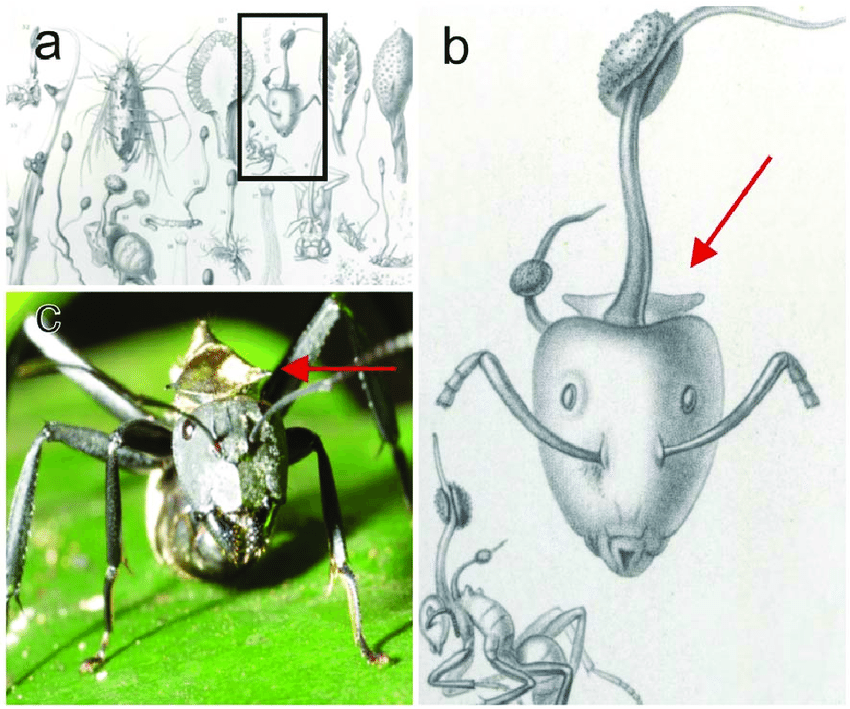
Ophiocordyceps Unilateralis
Nutrition is one of the most important life processes for any living organism – and fungi are no exception. Traditionally, most fungi obtain nutrition from dead and decaying matter – hence, they are called saprophytic organisms. However, not all species of fungi are saprophytic; some are parasitic – which means they require a living host for their nutrition.
In this article, we shall explore Ophiocordyceps unilateralis – a species of fungus that reproduces turning ants into “zombies” by ravaging its internals. Reproduction in fungi occurs either through fragmentation, budding, or producing spores.
Ophiocordyceps unilateralis reproduces by producing spores – however, this method involves ants and it almost always ends in the gruesome death of the insect. Ophiocordyceps unilateralis is pantropical – which means it exists in the tropical regions of both hemispheres. The fungus infects a specific species of ants – Carpenter Ants (Camponotus leonardi.) It does so by releasing minute spores that may fall on an ant. Once the spores stick to an ant, it starts penetrating into the ant’s body through a combination of enzymes and mechanical action. Eventually, the spore takes over the ant’s body, slowly changing its behaviour. As the infection progresses, the ant completely loses control of its body. More frighteningly, it is then compelled to leave its nest and find a vantage point that is usually about 25 cms off the ground and close to other ant trails. After finding a suitable vantage point, the ant clamps its jaws on to a leaf and waits for death. Meanwhile, the fungus starts feeding on the ant’s inside, preparing for the next stage in its lifecycle. Days after the ant has died, only a shrivelled shell of the ant remains. The fungus now produces fruiting bodies that break through the ant’s exoskeleton, creating protrusions that emerge from the ant body. Due to the vantage point, the spores that are jettisoned end up falling on new ants, enabling the fungus to restart its life cycle.
This interaction between the fungus and the ant is almost reminiscent of a typical “zombie” outbreak. However, research has shown that though the infection is 100% lethal, the end goal is not to convert all ants into mindless zombies, but to keep the population in check. This is important for the environment as a whole. Interestingly, the fungus does not seem to invade the brain of the ant, despite the fact that fungal colonization was observed in nearly every part of the ant’s body. This leads to the speculation that the “mind control” aspect may be due to the fungi interacting with the ant’s nervous system through bioactive compounds.
However, ants are not the only hosts of this type of infection. Another close species, the Ophiocordyceps sinensis, infects the larvae of ghost moths (Hepialus humuli). Following successful infection, the fungus erupts from the head of the caterpillar, forming a grotesque growth, reminiscent of a horn.
Explore other fascinating topics, from the evolutionary mysteries such as the extinction of dinosaurs to biological mysteries such as asexual reproduction in amoeba and more only on BYJU’S. Alternatively, subscribe to BYJU’S YouTube channel to explore interesting concepts on Science and Maths.





More Stories
Which are the Best Countries to get Higher Education From?
Detailed Information About Benefits of Worksheets for Students